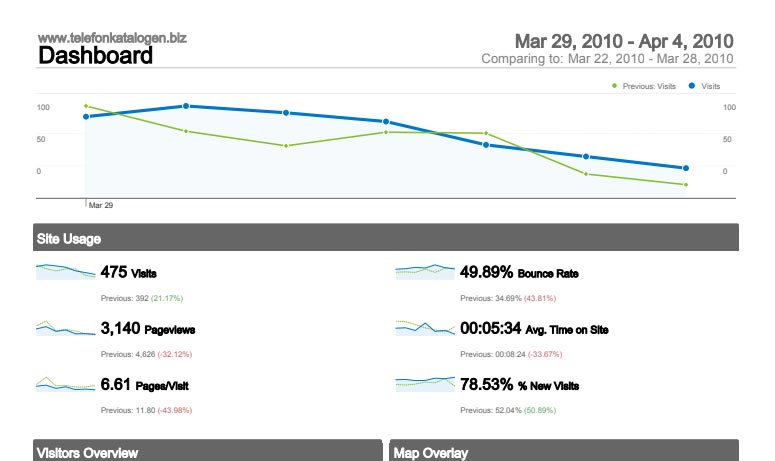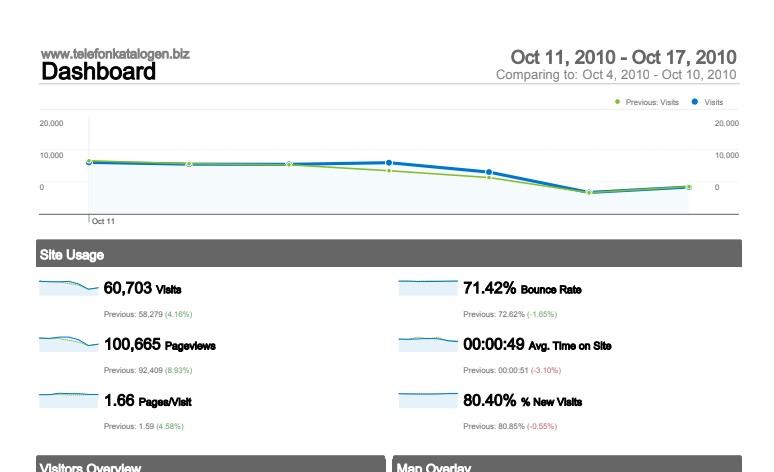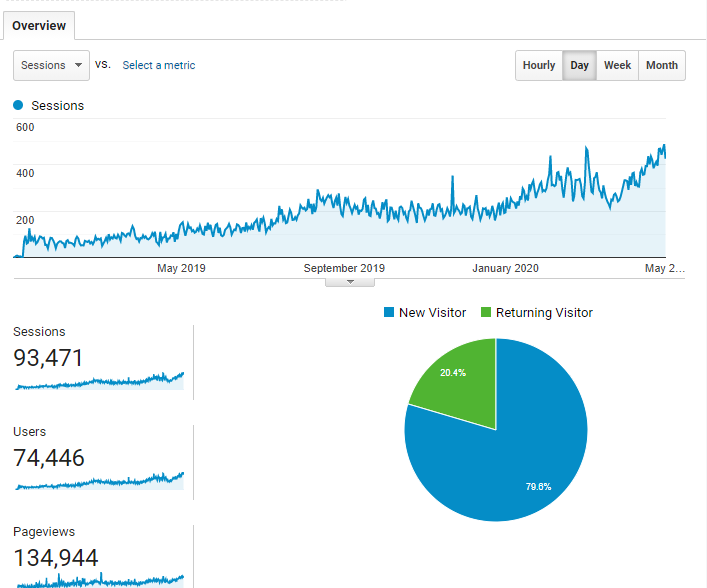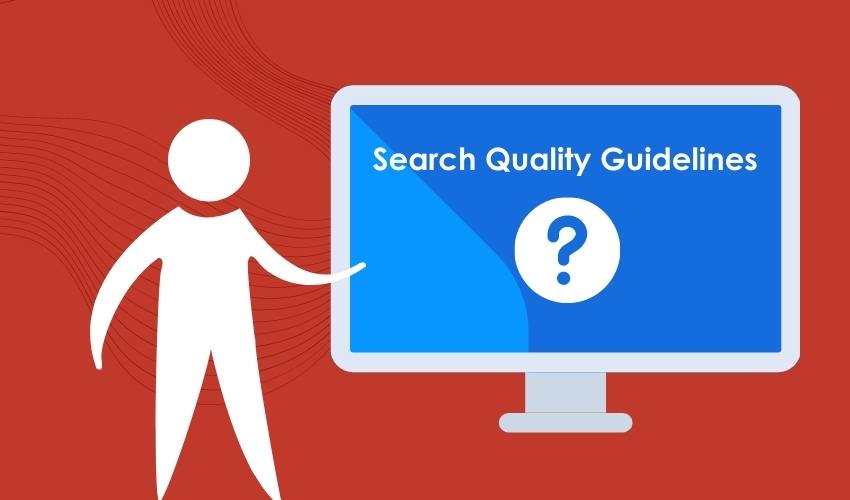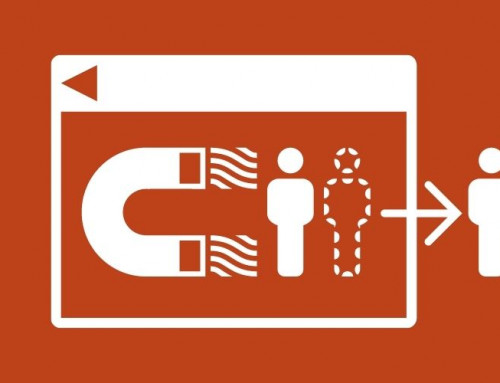Doing SEO and content marketing isn’t easy. In fact, only around 20% of new businesses succeed within the first year.
On top of everything else, there’s Google Google Search Quality Guidelines to think about. And for most people, even SEO’s, they would rather not hear about that.
But following Google Search Quality Guidelines can be the difference between your business failing in Google or flourishing. Why is that? Because if you follow Google’s guidelines, you can benefit from more traffic by following simple guidelines for your content.
- The document is created for Google employees who review search engine results pages manually to train the artificial intelligence that powers the algorithm.
- In case you didn’t know about it, but yes, Google does in fact use people to rate the search results.
- They basically show them different versions of search results and ask them to chose which ones answers the search results the best.
As a blogger or business owner, you don’t have the time and resources to research all of this. So in this guide, we’ve put together some important tips to help you get the SEO basics right for your blog or small business.
Table of Contents
What are Google’s Search Quality Guidelines?
Google’s search quality guidelines are an essential tool for all SEOs and content marketers.
In this article, we’ll review what they entail, how to use them. The benefits of quality guidelines in a process like SEO or content marketing. From both sides of the equation.
Google is continuously checking for ways to improve its products and services. Including search engine optimization (SEO) best practices and user experience on their platform. They include Gmail email service providers. Besides, the Google quality rating team publishes “quality guidelines.” They are documents that can help clarify any questions around these topics. Hence, it generally leads us back towards better results with measurable data points. Along with you’re trying to optimize your site. This is by following a systemized approach according to principles outlined here.”
Why does Google have these guidelines?
I’ve never thought about it, but Google has a set of guidelines for its search engine. Although they might not always be followed to the letter, I can see why. So, what happens is that when someone searches anything on Google. There are algorithms in place that rank results according to their relevance. Also, how reliable sources say these sites or pages are. The thing here, though, is this ranking system isn’t reliant on if you have had experience viewing content from one place over another. So, if you’re somebody who likes visiting websites like BuzzFeed, then your next visit will give them more weight than others, even without having clicked through before. Those articles make everyone feel good!
There are many reasons why Google has search quality guidelines. One of the primary purposes is to ensure that searchers find what they’re looking for. Also, as possible by ranking pages. It is also appropriate according to algorithms that take into account a page’s content. Moreover, its authority is based on factors such as how often it gets linked to other sites, used in queries related to specific topics.
Google pays close attention to when people use their site to get accurate results with your search query.
Good content is an important consideration. What makes it good content?
What is good content? Moreover, to have it confirmed would need significant research. Yet, Google makes it clear what great content looks like on its search engine. This is to such a degree that any individual can get an idea of what Google likes.
Over the few years, Google released complete guides to their search engine’s functions and how it works. Furthermore, they have stayed on top of updating these since releasing them.
Of course, this document is not for us. There are many documents that Google has created to train AI. For example, it ranks search results, and we have access to one of them by accident.
They give them different articles that will answer the query, and they have to select which ones are most clear.
So, the search quality guidelines we are reviewing today is an employee handbook for manual site reviewers. But it does give us much insight into what Google wants to be displayed in their SERPs. So, this document is super helpful.
How do you know if your content violates the guidelines?
The Google search engine is one of the most powerful tools in a business’s online marketing arsenal. It has become an invaluable information source on everything. From world events obscure topics that few would have ever thought to research before the advent of this all-knowing digital entity. But with these great powers come significant responsibilities. Out there, the humble content creators rely on SEO traffic. This is always to remember the simple rule.
Google search quality guidelines are in place to help keep the web free from spam, scams, and misleading content. Here’s a list of popular Google search quality guidelines that you can use as reference when blogging or creating your online store:
- Don’t publish duplicate content on many pages (otherwise known as “spamming”)
- Only create links with relevant information about where it will take readers if they click on it.
- Provide descriptions for images so users know what is being shown before clicking on them
How good are Google’s Search Quality Guidelines?
Although the new quality evaluator handbook is 160 pages long, it covers a wide variety of web content. As a result, it can help search specialists check the quality of any website they come across.
Google provides some great tips in their article for reviewing keywords. But, one of the more valuable sentiments provided is that Google has a way to estimate how “competitive” a keyword will be.
What is not included in this blog post.
- The search quality guidelines provide a complete overview of how to improve user experience with search.
- Below are the critical changes in 2016 and 2017
- Details irrelevant to site-building
If you want to read about this thing that has changed a lot recently, I can’t recommend Jennifer Slegg’s article from the SEM post enough. It is thorough and complete and excellent coverage of changes.
Today, I’m interested in this document and what we do here. Building sites containing informational content and product-driven review-based content.
When writing for search engine evaluators, the first thing we need to do is try to understand how they assess pages. Then, it’s time to present an actionable takeaway that we can apply on our sites.
Role of dissected Google’s Search Quality Guidelines blog
This document will help us with content development for our blog. One of the main questions I wanted to address in this article is whether using these techniques will impact production costs. To test this, we need an example to experiment on.
Unfamiliar words you might find using the app.
To understand 95% of the quality guidelines, know what mc stands for (main content). Besides, SC means (supplementary content), and ads are (ads).
- Main content (mc) – be mindful not to add too many links to your site if you’re trying to stay away from the possibility of being guilty of keyword spam.
- Extra content (SC) – supplementary content is all the items on a web page that cannot be looked at for viewing. This includes navigational sections, articles in the “related posts” section of a report. Moreover, sidebars might contain advertisements or external links.
- Ads – ads in this document refer to any monetization. Banner ads to the affiliate links and everything between.
The following definitions should be enough for us to start working together.
How can you improve your website to follow the guidelines and avoid being penalized by Google for violating them?
The Google quality guidelines are essential for all websites to follow. They outline what can and cannot be done to avoid penalties from Google. Such as being slapped with a negative SEO ranking or removed from the search engine altogether.
Google has recently updated its quality guidelines for websites. So far, these updates have only affected sites that do something wrong on their end (like violating copyright law). Yet, Google plans to release more changes shortly, affecting all webmasters and making it harder to rank well in search engines. To avoid penalties as a result of these new changes coming out soon, here are some things you should keep an eye on:
- Make sure your site is by implementing responsive design. Else, making your current website compatible with smaller screens like smartphones and tablets.
- To help crawlers read the content. We recommend updating any coding errors that they might not be able to access. It’s also essential when adding external links from other pages if those pages use special characters! –to make sure everything is working before putting it out there for all our viewers!
I know I’m doing this wrong but let me tell you why: crawling the internet is complicated. Besides, sometimes things aren’t going as planned. For example, a page has an error in its code or uses some fancy symbols like ñ (a Spanish letter). Then these “crawlers” can have trouble reading your website. It is because their software doesn’t recognize what language you’re using. So instead, it interprets anything with weird letters.
How to use Google’s quality guidelines
A good voice should be able to communicate appropriately. Google has guidelines for a quality tone of voice. It can help you put yourself in the best possible light when speaking or writing on their behalf through social media channels.
The first thing is consistency. It will make your brand sound authentic instead of spammy. That is, if all posts are written with the same style of language. The key here is making sure there are no contradictions within each message, also across many messages from different users at once. So, they come off more like one unified conversation rather than separate entities vying for attention.
I feel like I have an understanding of the difference, in Google’s eyes, between high-, medium-, and low-quality content now that I read this article.
I’ll break my findings into few sections:
- Page quality factors
- What does not matter
- How Google views product reviews
Page quality factors
Search engine evaluators have to look at many aspects to determine if a page will rank in Google’s search results.
- The expertise, authority, and trustworthiness (i.e., e-a-t) of both the page and website
- The content quality and quantity of the main content
- Website search engine ranking and other information about the website
- Information of the website owner or writer
During my reading of the document, everything a search evaluator does is within these contexts. So, let’s go through them one by one.
- The expertise, authority, and trustworthiness (i.e., e-a-t) of both the page and website
Google often likes to describe search engine optimization as a three-legged stool. That is content, links, and social signals. In their words, e-a-t is at the core of each leg of this stool (or its components).
Google wants your content to convey that you are knowledgeable about the subject. They are, yet, careful to mention that there is lots of variability in what experts can do and how they do it. A few manifestations of expertise that were mentioned include:
- E-a-t for news articles might = timely and accurate info.
- E-a-t for a humor website might = good reputation + engaged fans.
- E-a-t for a gossip site might = good reputation + reliable insider info.
- E-a-t for life situations might = personal experience.
- E-a-t for a science blog might = credible sources + established consensus.
There’s no one definition of e-a-t; it depends on what your site is trying to do. One of the most crucial points here is that Google does not need specific degrees or formal degrees. Also, they will value life experience over anything else.
That’s good because it means that we have the room to create quality content without having a degree in the subject and learn along the way. Google is much stricter about evaluating authoritative topics. That is on certain types of content in their search engine.
Your money or your life (YMYL) content.
Higher quality content (YMYL) could affect physical, emotional, or financial well-being. It may include:
- Transaction/sales/checkout pages
- Finance-related information
- Medical information
- Legal information
- Important news pages
If you are inaccurate in this type of content and users follow your advice, it could have serious consequences. As such, Google is much more vigilant about them. Also, requiring expert knowledge or vigorous research with credible sources.
Yet, they allow enough room for personal experience.
We see this on blogs such as making sense of cents. A blog about financial advice run by one person who is not a formal expert but who advice based on her own life experience and research.
How to increase your e-a-t
Full disclosure: these are not official recommendations from Google. They are my interpretations of what the guidelines say.
- Niche down.
In my view, it’s often easier to generate authority on a site if the focus is narrowed. For example, an article about strollers will likely have higher e-a-t. So it is when the site is only focused on baby products or strollers.
Rather than trying to complete everything you want your site to do and addressing every market. It might be best for any new blogger to focus on one thing or need.
I did this with her pup. Most time is spent learning about dog food: the best ingredients, what different breeds need, which foods to avoid. By the time I was done, I did have a lot of expertise in knowing more about dog food than 95% of people on earth – my content.
When building a blog, I recommend that you write the first ten articles yourself. Then, if you want to develop expertise in your niche, consider taking it one step further so that you can become an expert:
- Write the 50 articles yourself.
- Spend time reading about your niche as if you were studying for an exam
- fact-check the first 100 articles yourself.
2. Hire subject experts to either write or edit (become one yourself).
If you can afford to hire experts, do so. Suppose you can’t afford subject matter experts to write an article. Find a subject experienced person to edit the content for you. If that is too expensive or impossible for your needs- see if someone is available in-house at no cost or if someone local would be willing to produce.
There are many effective ways to hire writers and editors. But if you’re seeking expertise on a specific subject matter, then problogger.com might be the best place to find it. Writers there tend to have more of an in-depth specialization on their chosen topics.
A job market that is tailored for experts can be expensive. But when you are looking to hire someone with a high level of expertise, it is worth the cost in exchange for their services.
3. Add personal experience to your content.
Google trusts personal experience as a form of expertise. So, for example, even if you’ve never used it before. As a cook who has used several blenders, you might be qualified to comment on what features you look for in a blender and why.
Google’s quality guidelines have emphasized the importance of having a balanced life.
As someone who taught college writing, I find anecdotes to be the best way to inject personal experience into a discussion.
Anecdotes = exciting and short stories that happened.
When you start sentences with story-type questions, often they will answer. Then, as you begin to write more, you will find that personal stories appear.
4. Satisfying main content
Google wants content to be well-written with a good amount and quality of text in it. When a user enters a query, we want to provide the most relevant result.
If this seems like common sense, be prepared for a few nuances. First, every page has a specific purpose, and the word ‘satisfying’ can mean different things for different purposes.
For example, users who input a game name are more likely to be looking for that game than reviews about it.
In the same, though humorous articles do not have to be valid to be high quality, the primary purpose of humor is to entertain and not inform.
Google reveals what they want out of “information pages” on their site as well. It is how I’d categorize 99% of what independent website builders create. They want information pages to include:
- Factual accuracy
- Clarity of writing
- Comprehensiveness
The information pages, which according to them, should be of high quality and contain mc with expert consensus when applicable.
When you come across an article that supports your position, please cite it in your comment.
The Google website offers a few clues about the best length of content to share to be satisfied (they give some good examples, too)
So, this page is determined by the purpose, which will dictate how long it takes to be considered “satisfying.”
A key value for your mc is that they should be servicing the searcher what their user expects to find after typing in a query.
Don’t let the misconception that longer content is always better to stop you from trying a shorter article. We’ve proven short articles can do well, too!
Developing satisfying main content is hard to define, but here’s my view on doing that.
Creating a satisfactory quantity and quality of main content
1. If you are preparing a speech or presentation, be sure to cover topics rather than focusing on individual keywords.
A good article should rank for a variety of long-tail keywords. It is essential to provide as enough detail as possible for each topic. Also, attempt to split pieces up according to different issues if it creates better rankings.
Every site is different, so it will be up to you to assess what parts of your information should go into the content. An excellent place to start might be using a TF-IDF analyzer like onpage.org to see which topics are being covered. That is in the top-ranked pages or by looking at the keywords for related.
Use Ahrefs’ “also rank for” function, which tells you what websites rank for a keyword. Here’s how to do it:
Start with a keyword. For this article, I started with “hiking boots.”
Then, note what other related topics pages that rank for “hiking boots” also seem to cover.
You can also find content on the following topics:
- Waterproof boots
- Danner boots (a brand)
- Hiking shoes
- Hiking boots for men
If each topic were a subsection in your “hiking boots” article, you might want to devote 2-3 paragraphs on that topic.
Combine these sections with the other areas that make editorial sense. It will help if you end up with a solid piece of content that covers a specific topic. Also, it ranks for lots of good, juicy long-tail keywords.
2. Get serious about sources.
Google encourages the use of links to other sites in your niche to verify accuracy.
The best way to do that? Cite. Good. Sources.
In most cases, the content we publish in our community is considered informational material. Also, Google has said that factual accuracy is critical to their quality for pages of this type.
One way to conduct this is by compiling a list of credible sources for your freelance writers, which they can consult when writing.
3. Hire a fact-checker.
You do not need to keep a fact-checker on staff or anything like that. Usually, writers and editors are encouraged to research and bring their own experience into your article content.
Yet, it’s a good idea to hire an expert who can fact-check articles in your field for accuracy.
If you have hired someone to edit articles, they can usually also FactCheck.
Yet, if you haven’t hired a subject matter expert. Some excellent fact-checkers are on the internet. You usually have the best luck by searching in the proofreading category.
3. An excellent website with a reputation
Google considers both these metrics to be necessary.
So, depending on your niche, the level of information you need to provide about who runs the site will change.
In low-lying competition niches, according to Google’s words, an email address may be enough.
The more you venture into what could be considered YMYL territory. The more you need to prepare to provide information about who you (or your company) are and who exactly is writing this content.
It’s important to note that the goal here, in establishing trust from my research into creating a business plan. I have realized some things you can do as an entrepreneur to make your guidelines.
How to provide “satisfying website information.”
One possible cause of distrust from Google’s users is that the company may not tell them what it does with their data.
1. List your personal or company’s name with a mission statement and contact information on the “about” page.
To optimize your meta description, it is usually best to write one for your site’s “about” page.
If you want people to trust your website, it’s best not to use a persona here. If you don’t feel comfortable using your name, create a company.
If you run a business as an individual, talk about why. Also, how of your company also to what your qualifications are.
If your company is the owner of the project, focus on its mission and goals.
Along with this, providing an address to send the package to and a phone number can be helpful. Out of concern for your privacy, you don’t need to provide any personal information if you do not want to. The only need is that your credit card will be charged when the order ships.
Purchasing these items online will provide convenience and increased efficiency in your business.
2. List the editors and contributors.
Create a “contributors” or “team” page.
List your writers, editors, and contributors. If you are hiring writers, give them a bio and talk about their experience, emphasizing their real-life experiences.
If one is hiring an agency, make sure to name an editor even if you use a subject-matter expert for occasional advice. The person must be available to speak about their expertise.
3. Offer a straightforward and legal way for visitors to contact you.
Google only talks on an email address in the SQG. Yet, any contact forms will work, including a contact form, phone number, or address.
Nowadays, I don’t like putting my email in public places such as websites or form submissions. So instead, I use one of these contact forms:
- Ninja forms
- Contact form 7
The most important aspect of good writing is that it connects the writer and reader.
Now I’ll share some of the more minor details with you, which don’t need to be a concern.
Things one should never worry about on Google search quality guidelines
Google has made the following list of things that are not as important. Else, it doesn’t need to be reflected in your content.
Page type doesn’t matter.
Search evaluators should not be affected by the content of the page displayed in search results.
The important thing about user intent is the relationship to what the page will provide.
From a search quality standpoint, the implications of this are that we can create pages that aren’t text. Instead, we can develop tools, videos. Else corresponds best with what users want to find.
Keyword research is a critical part of the content creation process. Understanding which pages and which type of content dominate your target keywords will help you decide what kind of page to create.
The design doesn’t matter.
Following Google’s guidelines for evaluation, quality score is meant not to be determined by a gut reaction triggered by how a web page looks.
Image-based websites are also asked to disregard the design and focus only on the content.
Remember, we’re not talking about how manual search quality evaluators review pages in the SERPs. Yet, the overwhelming majority of the time, it won’t be a person looking at your page on Google’s end. Instead, it will be an algorithm. And well-crafted UX can affect how the algorithm views.
So be sure not to skimp on design. The takeaway is that as long as your site has been designed well, it won’t impact how you are ranked in Google.
Conclusion
If you want to be a master of search, the Google search quality guidelines are your one-stop-shop. These guidelines cover everything from providing good content on your website. Also, blog to best practices for online marketing campaigns. In this post, we’ve covered some essential highlights that will help any marketer improve their SEO. Also, earn more customers over time so, whether you need guidance in specific areas. Else, general advice on what it takes to succeed with digital marketing today. These guidelines have got you covered!
FAQs
What are Google’s guidelines for search quality ratings?
Google’s Search Quality Rater Guidelines are separated into guidelines. They for Beginners and Advanced raters. New raters start with the Guidelines for Beginners. It outline the principles that should be followed when rating a site. This is then followed by Steps on How to Rate Websites for Advanced raters. This document lists out how to rate different kinds of
What are Google’s guidelines?
Web admins should be sure that their sites are user-friendly and usable, as well as indexable by Google. They can make this happen with three simple steps: allow Google to crawl the site content; provide a good website experience for all visitors (both human users and search engine bots); help rank their site in the SERPs through SEO best practices like keyword targeting, on-page optimization, link building, etc.
The guidelines of web administration include making your website user-friendly. As a result, people will find them easier to use when searching online or browsing on social media timelines while also allowing Google access to crawl its pages for easy ranking purposes.
What are the most critical factors of a page’s quality rating?
Here are some of the most important considerations to factor in when rating your page:
- The purpose of this Website is.
- Expertise, Authoritativeness, Trustworthiness: these are all essential qualities.
- The number of stars should be based on the landing page of the task URL.
What is the easiest way to identify supplementary content?
Sometimes the easiest way to identify a web page’s layout. This is by looking for the parts of the page which are not main content or advertisements. A news home page’s purpose is to display new articles. Whereas an article previewing page has text that describes a news article and related tangents within it. Online stores use product pages to
How does Google Webmaster work?
Google Webmaster Tools are a free service that evaluates. Also, maintains your Website’s performance in Google search results. You don’t need to use GWT for your site to appear in search results. But it can offer you valuable information to help with your marketing efforts.
How does Google think about the quality of product reviews?
Google sets a high standard for the content of reviews. And we review every published study to make sure they meet our guidelines.
Earlier on, I wasn’t sure if Google was looking at product reviewers as scam artists.
Yet, the Google search quality guidelines provide no instruction on how product reviews should be handled.
Despite not being mentioned throughout the following document. It has compiled hints that help explain the situation.
Note: in this sentence, “I’ve cobbled together” does not mean gathering information at all. It means ‘piece together.’ the author of the article suggests they are piecing together hints from various parts of a document.
Moreover, product reviews are relevant for the “know” intent instead of restaurant rankings or product descriptions.
When sorting searches for product-related queries, Google puts a strong emphasis on the user’s intent.
- “Know” intent. These are queries that the user wants to consume more information about a product. Google references “review” keywords, but this almost includes other buying intent keywords as well (e.g., “best”).
- “Do” intent. The keyword queries in this category show the user wants to take action — usually a buy. The example also covers unmodified product keywords like “iPad.”
- “Navigation” internet. These queries show that the user wants to find products in a specific location. For example, “ipadsite:apple.com” indicates the user wants to see iPads on apple.com.
Reviews are a part of the “know” intent.
The following doesn’t need to be applied for “know” queries, but it seems to work, and we found that was one of the more critical sections in the document.
One of Google’s high-quality results for a product query is the following: a review. Among the strong points noted by the evaluator, “reviews about many specific models.” It may show that Google likes pages with lots of comprehensive information that might not have much to do with intent to buy.
From what I can see, Google’s product review guidelines provide a good clue about the type of content they enjoy.
Can Google consider product reviews YMYL pages?
Your money or your life (YMYM) pages cover topics that could affect a user’s physical and emotional health.
At first, YMYL pages were discussed alongside product queries. This because website checkout pages were discussed in the definition of most YMYL pages. Therefore, I thought it was an eCommerce thing.
Is it true that the YMYL designation extends to a user’s research phase, as well? That means reviews should be taken. Not if we’re in a YMYL market.
Is life experience is still a good form of expertise for Google’s Search Quality Guidelines product reviews?
As Google mentions in the introduction, this is a challenge we’ve already discussed.
Google suggests that experts are not necessary to review products, but the reviews should be detailed and helpful.
The implied point here is that an individual’s experience in a related field would help them write more helpful product reviews.
Is adhering to Google’s Search Quality Guidelines worth it?
I want to list and summarize all the items I have come up with in this post on resources.
- Go a bit niche in creating more e-a-t
- Hire experienced writers or editors to review your content before it is published.
- Provide your example of the topic to make it more personal.
- A keyword can spark ideas to expand on specific topics.
- Understand the difference between incredible and unreliable sources. Also, build a list of trustworthy sources.
- Get a fact-checker.
- Include a link to be on your “about” website page.
- List editors and website contributors somewhere, highlighting their experience.
- Give users the option to contact you.
On the whole, we only have two things that cost money. hiring subject matter experts to write/edit and hiring a fact-checker.
Unfortunately, most of us can’t afford to use a nanny full-time.
But I don’t think you have to.
In either case, it would be more than acceptable to find. Besides, hire freelance writers who can offer relevant life experience in their content. Besides, one-off projects for experts like editors and fact-checkers may also be necessary from time to time.
It would not be worth it, considering the probable earnings of your website.
And, this was worth it. But, when I started here pup (see the story here, I made some mistakes in the content people contacted me about angry.
I corrected them immediately and solved them to buckle down to strengthen my expertise, which doesn’t cost anything.
Instead of hiring a team of experts. It may be beneficial to communicate to those who are already experts in that particular niche and learn from them.
It’s essential to provide accurate information in a video. Including ensuring users know you’re talking about an excellent topic. So, making sure they understand what you do well is free.
Share This Story
